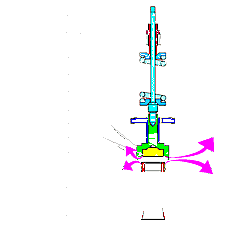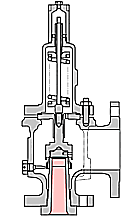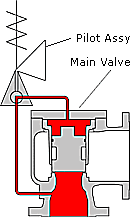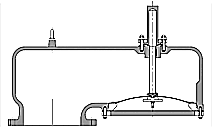FUKUI SEISAKUSHO

FUKUI SEISAKUSHO - FUKUI was founded in 1936, we have provided safety relief valves as a worldwide leading manufacturer for 80 years. A safety relief valve is the key product for customers as “final safety equipment.” It supports human life in over 80 countries around the world: such as power plant, gas supply chain (drilling plant, liquefaction facility, LNG carrier, and LNG Terminal) and new energy (hydrogen fuel, biomass, methane hydrate and so on) FUKUI has been strongly committed to provide the elaborate quality products guaranteed by “Made in Japan” since our establishment. We additionally have been working on after-sales service by global service networks. As a result of our efforts to address sincerely customer needs, we have received high reputations from domestic/overseas customers. Energy market continues growing mainly in developing countries and business which requires high-technology is increasing with market diversification. In such ever-changing fields, we will pursue initiatives for the global marketing We make it our mission to show presence of Japan through “Monozukuri (art, science and craft of making things)”, and to build organizational culture where the company members can find their jobs rewarding. We look forward to sharing those hopes with you and greatly appreciate your continued encouragement.
Safety valve
Safety valve is a valve that act as a protection of equipment from exploding or damaging and it is mainly installed in pressure vessels such as chemical plants, electric power boilers and gas storage tanks. Safety Valve is a type of valve that automatically actuates when the pressure of inlet side of the valve increases to a predetermined pressure, to open the valve disc and discharge the fluid (steam or gas ) ; and when the pressure decreases to the prescribed value, to close the valve disc again. Safety valve is so-called a final safety device which controls the pressure and discharges certain amount of fluid by itself without any electric power support. Safety valve support not only the safety of energy industry but also the safety and security of our life.

Function of the Safety Valve
- "Nozzle" inside the Safety Valve starts to receive a higher pressure from the inlet side of the valve.
- When the pressure becomes higher than the set pressure, "Disc" starts to lift and discharge the fluid.
- When the pressure decreases until the predetermined pressure, the force of the spring closes "Disc".
( Role of the spare parts )
Nozzle --- Pressure Entrance
Disc ----- Lid
Spring --- Pressure Controller
Classification of Safety Valves
here are three kinds of Safety Valves in FUKUI production line.
Spring-loaded Pressure-relief Valves

Spring-loaded Pressure-relief Valves.
Generally, the safety valves are referred to the Spring-loaded Pressure-relief valves, the most common type ( See the left figure ).
The load of the spring is designed to press the "Disc" against the inlet pressure.
Depending on the fluid type, such as steam, gas or liquid, we are offering a Bellows model to clear the back pressure effect.
Pilot-operated Pressure-relief Valves

Pilot-operated Pressure-relief Valves.
Pilot-operated Pressure-relief Valves are composed of Pilot Assy and Main Valve. Although Spring-loaded Pressure-relief valves adopts the force of the spring against the inlet pressure, the reliving pressure and reseating pressure of the Pilot-operated Pressure-relief Valves is controlled by Pilot Assy, which acts nearly as same as Spring-loaded Pressure-relief valves. There is no adjusting function in the Main Valve.
Pilot-operated Pressure-relief Valves have larger size variations compared to Spring-loaded type, which is applied in a severe condition such as high pressure.
Dead-Weight Pressure-relief Valves

Dead-Weight Pressure-relief Valves.
In case the design pressure of the pressure vessel is set at very low pressure, Dead-weight Pressure-relief valve adjusts relieving pressure only by the disc weight.
The Vacuum relief valve has been adopting this functional characteristic which absorbs the pressure when the inside of the pressure vessel falls into a negative pressure.

